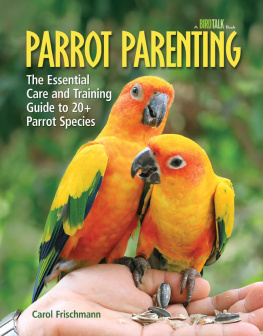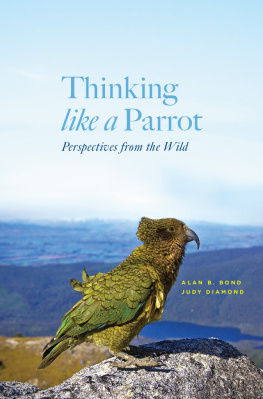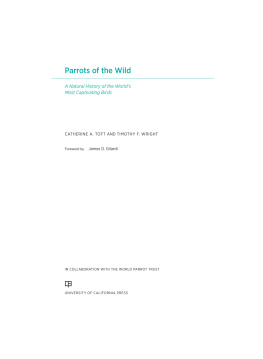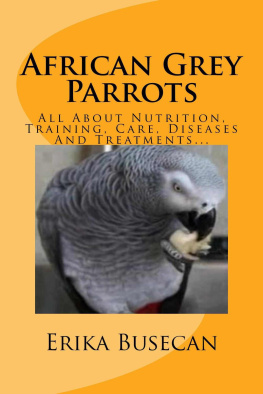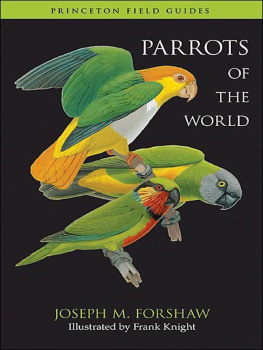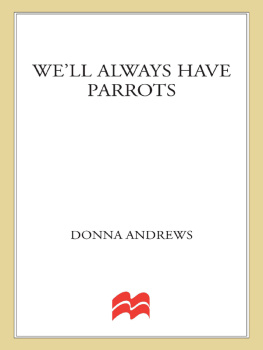Parrots: The Animal Answer Guide
Parrots
The Animal Answer Guide
Matt Cameron

2012 The Johns Hopkins University Press
All rights reserved. Published 2012
Printed in the United States of America on acid-free paper
9 8 7 6 5 4 3 2 1
The Johns Hopkins University Press
2715 North Charles Street
Baltimore, Maryland 21218-4363
www.press.jhu.edu
Library of Congress Cataloging-in-Publication Data
Cameron, Matt, 1964
Parrots : the animal answer guide / Matt Cameron.
p. cm.
Includes bibliographical references and index.
ISBN 978-1-4214-0543-8 (hdbk. : alk. paper) ISBN 978-1-4214-0544-5 (pbk. : alk. paper) ISBN 978-1-4214-0659-6 (electronic) ISBN 1-4214-0543-1 (hdbk. : alk paper) ISBN 1-4214-0544-X (pbk. : alk. paper) ISBN 1-4214-0659-4 (electronic) 1. ParrotsMiscellanea. I. Title
QL696.P7C319 2012
598.71dc23 2011047315
A catalog record for this book is available from the British Library.
Special discounts are available for bulk purchases of this book. For more information, please contact Special Sales at 410-516-6936 or.
The Johns Hopkins University Press uses environmentally friendly book materials, including recycled text paper that is composed of at least 30 percent post-consumer waste, whenever possible.
To Christine, Katelyn, and Alana
I was awakened at 5 a.m. by a whirring noise, and looked out of the sleep-out to see Shellies [Budgerigars] in millions. They went on with hardly a break until about 8 a.m. They were like clouds at times, and actually darkened the sky, a very wonderful sight. An estimate of the number would be impossible, but I could say that they were passing for three hours, and any number from one to ten millions must have passed every ten minutes.
BYRON MCLACHLAN, South Australia, 1932
Acknowledgments
This book could not have been written without access to the published findings of dedicated parrot biologists. Despite the many demands on their time, they always responded positively to my requests for assistance. I am especially grateful to those who reviewed draft answers and chapters. They include Kathryn Arnold, Matt Berg, Robin Bjork, Jack Bradbury, Don Brightsmith, Jessica Eberhard, Suzanne Eckert, Terry Greene, Andrew Mack, Juan F. Masello, Ron Moorhouse, Penny Olsen, Irene Pepperberg, Camilla Ribas, Craig Symes, and Tim Wright. Others answered specific questions during the drafting stage. They include Michael L. Avery, Andy Bennett, Matt Berg, Rob Heinsohn, Victor G. Hurley, Leo Joseph, Roland Kays, Kevin McGraw, Richard Prum, and Devi Stuart-Fox.
I was fortunate in being able to call on a number of excellent photographers to enliven the text. A special debt is owed Heinz Lambert and Roy Toft ( www.toftphoto.com ), working photographers who provided a large number of images. Others who supplied photos include Mark Bittner, Lindsay Cupper, Cathy Katsoolis, Patrick Kelly, Tony Kirkby, Steve Milpacher, Phil Perry, Irena Schulz, and Klaus Uhlenhut. Many researchers took the time to sort through their archives and supply photos. They include Michael L. Avery, Michael Barth, Robin Bjork, Walter Boles, Suzanne Eckert, Jonathan Ekstrom, Terry Green, Victor G. Hurley, Dean Ingwersen, Arlene Levin-Rowe, Justin Marshall, Juan F. Masello, Ani Patel, Andrew Somerville, Craig Symes, Chris Tzaros, and Tim Wright.
I thank Leo Joseph for providing access to parrot skins in the Australian National Wildlife Collection and David Gowland for permitting photography of birds at the Priam Psittaculture Centre. Rosella Foods Pty. Ltd. granted permission for the reproduction of their famous parrot logo, and Australia Post granted permission to reproduce the Australian parrot series stamps and first day cover. Staff at the National Library of Australia and Australian War Memorial efficiently processed requests for access to material in their picture collections.
The writing of this book has taken some time and I am grateful for the patience shown by the team at the Johns Hopkins University Press. The support and guidance provided by Vincent Burke, my editor, was much appreciated, while Jennifer Malat ensured the publishing process ran smoothly. Sitting on my desk are well-thumbed copies of published titles in the Animal Answer Guide series. They were a valuable guide on how to approach particular topics. Over the years, discussions with a number of people have fostered my interest in parrots and given me the confidence to study and write about this amazing group of birds. They include Stephen Garnett, Terry Greene, Rob Heinsohn, Damon Oliver, Penny Olsen, and Rick Webster.
Finally, this book could not have been completed without the love and support of my wife, Chris, and daughters, Katelyn and Alana.
Introduction
My early interest in natural history was piqued not by parrots but by birds of prey. As a teenager, I recall spending hours poring over Tom Cades 1982 Falcons of the World and Jack and Lindsay Cuppers 1981 Hawks in Focus. My dream was to become a raptor biologist. Growing up in the Riverina town of Griffith, it was parrots, however, that formed a constant backdrop to my life. Our house was only a couple of streets back from a bush-covered hill, home to a flock of Pink Cockatoos (Lophochroa leadbeateri). We referred to them as Major Mitchells or Wee Jugglers, though you rarely hear the latter name anymore. Small flocks regularly flew over our house, their quavering calls causing us to race outside to catch a glimpse. Im happy to report the birds are still there 30 years later and, when Im home visiting Dad, their calls still draw me outside. It was perhaps no surprise that I chose to study Glossy Cockatoos (Calyptorhynchus lathami) for my PhD. I learned that the differences between raptors and cockatoos are not as great as one might think. Their nests are difficult to find and hard to reach, individuals can be elusive but do little when found, and both have qualities that result in complex relationships with people.
My goal in writing this book was to give people a general understanding of parrot biology. I have tried to emphasize how environmental challenges and the imperative to reproduce have shaped the appearance and behavior of species. The book is arranged thematically, each chapter dealing with a particular aspect of parrot biology or conservation. Answers stand alone, allowing people to dip in and out of the book. This has resulted in some repetition, which I hope the dedicated reader will forgive. The literature on parrots grows each day, meaning this animal answer guide is a snapshot of what is known at the time of completion. The reader should keep in mind that our knowledge in a number of fields (e.g., color and the evolutionary relationships between species) is growing rapidly. To aid readability, I have not used the standard scientific referencing system. A selected bibliography is presented at the end of the book, with a complete bibliography available at the publishers website ( www.press.jhu.edu ). I have endeavored to mention the authors of key papers, and I trust others will be pleased to see the results of their work reported herein. I hope all readers enjoy the book.
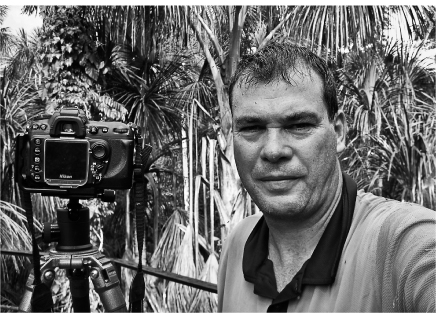
Parrots: The Animal Answer Guide
Chapter 1
Introducing Parrots
What are parrots?
Next page


